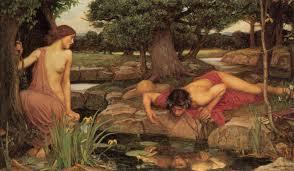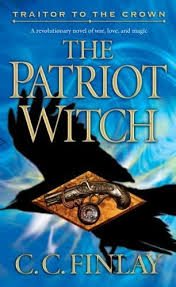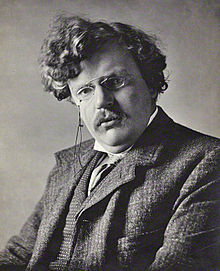Stephen Morris's Blog, page 47
July 22, 2014
Red City Review Announces 5-Star Review!
Come Hell or High Water: Part One: Wellspring by Stephen Morris
In 1356, an entire town turned against one woman. Driven by religious fervor, they proclaimed her a witch and put her to death without a proper trial or formal sentence. But, as Fen’ka inhaled the smoke surrounding her on the stake to which she was affixed, she issued her own verdict – and with it came a punishment that would endure for centuries… until justice, however harsh, was once and for all served. ‘Come Hell or High Water: Part One: Wellspring’ by Stephen Morris carries readers back in time to witness this age-old injustice and follow the consequences, and culmination, of Fen’ka’s curse on the city of Prague. The chapters alternate between this fourteenth century storyline and another, set in 2002, centered on a young girl named Magdalena, whose fascination with the occult and determination to do more with her life have inexorably drawn her into Fen’ka’s post-mortem quest for justice. As Magdalena comes to terms with her otherworldly assignment in one chapter, the ways Fen’ka’s final words came back to haunt the villagers of Prague is explored in the next – and, so on and so forth it goes, masterfully, until the end of this, the first installment in the Come Hell or High Water trilogy.
‘Wellspring’ is an entirely enthralling, incredibly intense novel that seamlessly weaves together elements of history, folklore, popular culture, and religious, spiritual, and occult practices and beliefs – among other things. Author Stephen Morris’ passion for, and commitment to, his cast of characters is evident in his prose, which is fluid, dynamic, and absolutely haunting at times. As eloquently told as it is informative and thought-provoking, ‘Wellspring’ is a title worthy of standing on the shelf alongside acclaimed works such as those in The Vampire Chronicles and Mayfair Witches series penned by the mother of all things occult, Anne Rice. It’s definitely a page-turner and will hold your interest from start to end, though its end isn’t really and ending, but, rather, an invitation to the next book.
RED CITY REVIEWS also hosts an annual book award contest, that includes cash prizes in five different book categories, including Science Fiction/Fantasy. The Red City Review Book Awards offers a grand prize of $500, that also includes other great prizes that will help promote the winning book so that it receives the attention it deserves. Finalists will be announced October 10, 2014.
The post Red City Review Announces 5-Star Review! appeared first on Stephen Morris, author.
July 11, 2014
Narcissus

Echo and Narcissus (1903), a Pre-Raphaelite interpretation by John William Waterhouse
Despite there being no clear evidence that the flower’s name derives directly from the Greek myth of Narcissus, who drowned while gazing at his own reflection in the water, the two are firmly linked in popular culture and the flower taken as a symbol of vanity. Another Greek myth finds Persephone, daughter of the goddess Demeter, lured to her doom in the Underworld by the god Hades while picking a narcissus flower.
In ancient China, a legend about a poor but good man holds he was brought many cups of gold and wealth by this flower. Since the flower blooms in early spring, it has also become a symbol of Chinese New Year. Narcissus bulb carving and cultivation is even an art akin to Japanese bonsai. If the narcissus blooms on Chinese New Year, it is said to bring extra wealth and good fortune throughout the year. Its sweet fragrances are highly revered in Chinese culture.
In classical Persian literature, the narcissus is a symbol of beautiful eyes, together with other flowers that equal a beautiful face with a spring garden, such as roses for cheeks and violets for shining dark hair.
The narcissus, otherwise known as daffodil, is the national flower of Wales, where it is traditional to wear a daffodil or a leek on Saint David’s Day (March 1). In Welsh the daffodil is known as “Peter’s Leek”, cenhinen Bedr or cenin Pedr). You can read more about daffodil and spring here.
The post Narcissus appeared first on Stephen Morris, author.
July 1, 2014
The Patriot Witch for July 4!
 The Traitor to the Crown series by C.C. Finlay opens in 1775. Proctor Brown is an ordinary young man working the family farm in New England, determined to defend the rights of the colonies as a member of the local militia. But magic is in his blood and a chance encounter with an arrogant British officer bearing magic of his own catapults Proctor into the adventure of a lifetime. The three books in the series (Patriot Witch, Spell for the Revolution, and Demon Redcoat) trace Proctor’s involvement with another young patriot Deborah Walcott with the gift of magic, George Washington, and a secret society of evil witches (the Covenant) that has been pulling the strings of European history for centuries. The battles of the American Revolution are the stage-dressing of a much more fundamental war between the witches of the Covenant and the witches of the colonies who are determined to wrest control from the hands of the Covenant and grant real freedom to the peoples of North America and Europe.
The Traitor to the Crown series by C.C. Finlay opens in 1775. Proctor Brown is an ordinary young man working the family farm in New England, determined to defend the rights of the colonies as a member of the local militia. But magic is in his blood and a chance encounter with an arrogant British officer bearing magic of his own catapults Proctor into the adventure of a lifetime. The three books in the series (Patriot Witch, Spell for the Revolution, and Demon Redcoat) trace Proctor’s involvement with another young patriot Deborah Walcott with the gift of magic, George Washington, and a secret society of evil witches (the Covenant) that has been pulling the strings of European history for centuries. The battles of the American Revolution are the stage-dressing of a much more fundamental war between the witches of the Covenant and the witches of the colonies who are determined to wrest control from the hands of the Covenant and grant real freedom to the peoples of North America and Europe.
Real events in American and European history are incorporated into the series, making the novels a fascinating exploration of how those events might have influenced, or been influenced by, magic and witchcraft. (Proctor’s style of doing magic, drawing on verses of the Bible, is an intriguing exploration of the relationship between magic and religion.) I urge you to add these books to your “wish list!”
The post The Patriot Witch for July 4! appeared first on Stephen Morris, author.
June 23, 2014
Part 1 wins another award!

JUST IN! Part 1 receives Indie Reader Approved award!
The 2014 INDIE READER DISCOVERY AWARDS just announced that Come Hell or High Water, Part 1 has received their coveted “Indie Reader Approved” sticker! Their review says:
“Injustice comes in many forms, large or small. They creep inside our societies. And some injustices can shape the course of history.
COME HELL OR HIGH WATER, PART ONE: WELLSPRING is about setting up a path to find justice. A woman, Fen’ka, a woman with ties to the occult, is burned for the crime of witchcraft, even though she’s helped the town with various request, from love potions to advice, medicine, requests for success, then a treasured cow (actually, it’s a heifer) dies, and all hell literally breaks lose. But Fen’ka manages to call upon Svetovit, a pagan god, and she curses the town’s future.
Fen’ka’s serial curses drive each chapter, and the reader is treated with discovering what might come of them. It’s almost Hitchcokian: Present the players. Tell us that these set of players will suffer. Then set the events loose. You relish in every mishap encountered.
From beyond the grave, Fen’ka enlists the help of a university personal assistant, Magdalena, to help her exact revenge on the town that murdered her, only now we’re in the year 2002.
…Out of the many characters we meet, Father Conrad is a standout. The priest who instigates Fen’ka’s burning and is to blame for another death in the book, rises from hand-rubbing villainy to something far more clever. You sympathize with his passions, and his ultimate fate is perhaps one of the book’s best moments. It’s clear that the author enjoys writing the 1325 sections of the book, because the prose really comes to life.
…Magdalena’s quest is heightened not so much because the reader is interested in seeing her obtain her heart’s desire (power), rather, the question is will Fen’ka get hers. And that’s good enough to propel the reader along.
A well-crafted yarn, which takes you deep into the year 1325, mysticism, religion, and pagan rites in a quaint Prague town, COME HELL OR HIGH WATER, PART ONE: WELLSPRING is an epic journey worth taking.”
The post Part 1 wins another award! appeared first on Stephen Morris, author.
June 12, 2014
Honorable Mention at New York Book Festival 2014!

The announcement of the 2014 New York Book Festival winners!
The New York Book Festival just announced the winners of its 2014 competition and — TA DA! — an HONORABLE MENTION goes to Come Hell or high Water! There will be an awards dinner on June 20 at the Grolier Club in Manhattan.
To see all the winners, click on the New York Book Festival link and then on the “See Winners Here” in the middle of the home page.
The post Honorable Mention at New York Book Festival 2014! appeared first on Stephen Morris, author.
June 11, 2014
G.K. Chesterton (d. 14 June, 1936)

G.K. Chesterton, born 29 May 1874-died 14 June, 1936
I remember being mesmerized by Chesterton’s Man Who Was Thursday when I first read it, nearly 35 years ago! I was startled to discover, near the end of the book, when Thursday — who has been searching for Sunday for most of the book — finally meets Sunday and the description of Sunday — in my mind’s eye — revealed Fr. Aidan Kavanagh, my favorite professor at the Yale Divinity School! I can still quote from memory several paragraphs from the chapter titled “The Ethics of Elfland” in his book, Orthodoxy.
Chesterton is well known for his fictional priest-detective Father Brown and for his reasoned apologetics. Even some of those who disagree with him have recognized the universal appeal of such works as Orthodoxy and The Everlasting Man. Chesterton, as a political thinker, cast aspersions on both Progressivism and Conservatism, saying, “The whole modern world has divided itself into Conservatives and Progressives. The business of Progressives is to go on making mistakes. The business of the Conservatives is to prevent the mistakes from being corrected.”
Chesterton usually wore a cape and a crumpled hat, with a swordstick in hand, and a cigar hanging out of his mouth. He had a tendency to forget where he was supposed to be going and miss the train that was supposed to take him there. It is reported that on several occasions he sent a telegram to his wife Frances from some distant (and incorrect) location, writing such things as “Am in Market Harborough. Where ought I to be?” to which she would reply, “Home”. Because of these instances of absent-mindedness and of Chesterton being extremely clumsy as a child, there has been speculation that Chesterton had undiagnosed developmental coordination disorder.
The post G.K. Chesterton (d. 14 June, 1936) appeared first on Stephen Morris, author.
May 27, 2014
Indie Reader Discovery Awards

IR Discovery Awards says, “COME HELL OR HIGHWATER, PART 2: RISING is a sprawling fantasy epic that takes the reader on an exciting ride through century’s worth of Prague history and folklore. “
The Indie Reader Discovery Awards recently announced that PART 2: RISING of the “Come Hell or High Water” trilogy has qualified for their “Seal of Approval!” In addition to their remarks in the photo caption above, they also wrote:
“Reminiscent of Sergi Lukyanenko’s The Night Watch, COME HELL OR HIGH WATER is an intricate, tightly woven modern fairy tale that tells a fanciful story in a realistic, believable way….”
Thank you, IR Discovery Awards!
The post Indie Reader Discovery Awards appeared first on Stephen Morris, author.
May 22, 2014
An Ancient Egyptian Health Plan?

Crocodiles were associated with Sobek, a god responsible for pharaonic power, fertility, and military prowess, but served additionally as a protective deity with apotropaic qualities, invoked particularly for protection against the dangers presented by the Nile river.
My current writing project is an academic book about Byzantine attitudes towards sexuality in the 4th–14th centuries. I found that the early Egyptian monks, as well as the later Byzantine monastic charters, insisted that there should be no female animals kept on monastic farms as the monks would be tempted to use them in untoward ways. This fear seemed exaggerated to me, so I did some checking to see how real the likelihood of bestiality was.
It turns out that bestiality was not only common in rural areas but was a part of pagan worship and folk magic. Egyptian gods were always depicted in animal form or as human-animal hybrids and Greco-Roman mythology described gods and goddesses assuming animal form to seduce humans. In northern Europe, heroes and royal families claimed to be descended from animal ancestors who bestowed their strength, cunning, and other abilities on the clan. Sex with certain animals was reported to heal certain diseases.
One example of the healing powers unleashed by acts of bestiality struck me in particular. In ancient Egypt, the god Sobek was depicted in alligator form and was said to have helped Isis collect the body parts of her son Horus and raise him from the dead as well as impregnating Isis and giving her into the protection of a “bask” or group of crocodiles. Because of this, sex with a crocodile was said to heal certain life-threatening diseases and the Egyptians developed a way of catching and then flipping a crocodile onto its back and restraining it so that it could not resist penetration. Clearly this form of bestiality was a large group activity and not something engaged in by a man ashamed and alone in the dark, though it is hard to imagine how terrible the disease must have been to drive people to resort to this as a cure!
The post An Ancient Egyptian Health Plan? appeared first on Stephen Morris, author.
May 8, 2014
The Night Circus
I was able to read The Night Circus by Erin Morgenstern recently while I was in Venice. It was a joy to come back each afternoon or evening to the apartment we were staying in and lose myself again for a while in the enchanting (and enchanted!) world of the circus. I was delighted to follow Celia and Marco, engaged in a duel of magical prowess to the death though neither of them realize the dire consequences of failure at the beginning of the game. Their respective teachers who train them in the use of their magical abilities have clearly been at this for quite some time, setting generation after generation of students on the perilous road to prove which instructor’s methods are better suited to unleash magic into the world (the story of Celia and Marco takes place over several years, stretching from the late 1800s to early 1900s).
The magical world of the circus comes to include a devoted group of followers whose lives become as entangled in the fate of the circus-world as the performers themselves. These followers become as critical to the life of the circus as the magicians who craft and sustain it and finally one of these devoted followers must make a choice that is as vital to the existence of the circus as the choices of Celia, Marco, and the other performers.
Magic suffuses everything in the Night Circus world, which is lovingly crafted and described by Ms. Morgenstern in this, her first novel. I heartily recommend it without reservation!
The post The Night Circus appeared first on Stephen Morris, author.
May 1, 2014
“Happy Beltane / May Day!”

Queen Guinevere, as the May Queen, leads the May Day celebrations in Camelot.
Considered the first day of the summer season in traditional European societies, the first day of May has been celebrated in many ways over many centuries. May Day is related to the Celtic festival of Beltane and the Germanic festival of Walpurgis Night. May Day falls half a year from November 1 (Samhain, Hallowe’en, and All Saints’ Day) and it has traditionally been an occasion for popular and often raucous celebrations.
The earliest May Day celebrations appeared in pre-Christian times, with the festival of Flora, the Roman goddess of flowers, and the Walpurgis Night celebrations of the Germanic countries. It is also associated with the Gaelic Beltane. Many pagan celebrations were abandoned or Christianized during the process of conversion in Europe. A more secular version of May Day continues to be observed in Europe and America. In this form, May Day may be best known for its tradition of dancing the maypole dance and crowning of the Queen of the May. Fading in popularity since the late 20th century is the giving of “May baskets”, small baskets of sweets and/or flowers, usually left anonymously on neighbors’ doorsteps. (I remember making May Baskets in school and field day Maypoles on the playground.)
The day was a traditional summer holiday in many pre-Christian European pagan cultures. While February 1 was the first day of Spring, May 1 was the first day of summer; hence, the summer solstice on June 25 (now June 21) was Midsummer.
In Oxford, it is traditional for May Morning revellers to gather below the Great Tower of Magdalen College at 6:00 a.m. to listen to the college choir sing traditional madrigals as a conclusion to the previous night’s celebrations.
On May Day, the Romanians celebrate the arminden (or armindeni), the beginning of summer, symbolically tied with the protection of crops and farm animals. The name comes from Slavonic Jeremiinŭ dĭnĭ, meaning the prophet Jeremiah’s feast day, but the celebration rites and habits of this day are apotropaic and pagan, possibly originating in the cult of the god Pan.
The day is also called ziua pelinului (mugwort day) or ziua bețivilor (drunkards’ day) and it is celebrated to insure good wine in autumn and, for people and farm animals alike, good health and protection from the elements of nature (storms, hail, illness, pests). People would have parties outdoors with fiddlers and it was customary to eat roast lamb, as well as new mutton cheese and drink mugwort-flavoured wine to refresh the blood and get protection from diseases. On the way back from the parties, the men wear lilac or mugwort flowers on their hats.
Other May Day practices in many places include people washing their faces with the morning dew (for good health) and adorning the gates for good luck and abundance with green branches or with birch saplings (for the houses with maiden girls). The entries to the animals’ shelters are also adorned with green branches. All branches are left in place until the wheat harvest when they are used in the fire which will bake the first bread from the new wheat.
The post “Happy Beltane / May Day!” appeared first on Stephen Morris, author.

![5redstars-300x70[1]](https://i.gr-assets.com/images/S/compressed.photo.goodreads.com/hostedimages/1406111323i/10506089.jpg)



